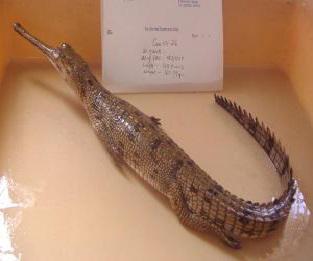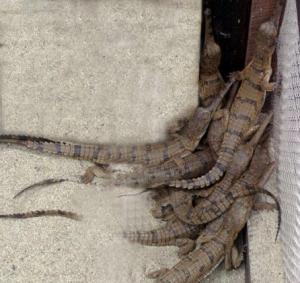Kamal Gairhe
The study will attempt to find the cause of mortality of young Gharials. The knowledge thus obtained will aid on better management of captive Gharials in the range countries and boost the number to supplement the natural population so as to increase their long-term survival in nature.

Gharials are specialized, strictly piscivorous keystone species of fresh water ecosystem. The species is in the endangered list. They are at the top of the pyramid of aquatic ecosystems and loss of the species will affect other aquatic species in the pyramid. Besides this, the Gharial home range has shrunken to Nepal and India, thus this species is of global importance now. The range country should attempt to restore the wild population of this species with the collaboration of conservation organizations abroad. The range countries obviously have primary role towards protection, conservation and judicial utilization. Hunting and river pollution have seriously caused a serious decline in its population after 1960s in Nepal and India. Survival rate of less than one percent of the hatchlings in the wild is also a major factor to lower population.

In order to restore the Gharials population in the wild, India and Nepal started captive breeding program in 1972 and 1978 respectively. India has released more than 3000 captive reared juveniles in 12 different rivers with a majority in the Chambal River and Nepal has released more than 539 captive reared young Gharial in six major rivers. Finding Gharial nests, watching against theft, collection and transportation of eggs to a particular locality for further incubation is tremendous fieldwork. A substantial number of hatchlings are born and they are reared for more than three years before releasing back in the wild. Despite such an effort, the first year of the life of the hatchlings is very trouble some. We loose more than 50 percent of the hatchlings due to unknown causes.
This project attempts to find out the causes behind such high mortality. As many as possible, dead hatchlings will be collected and transported to the laboratory of the Veterinary Teaching Hospital at IAAS, Rampur. A thorough necropsy examination and collection of samples fro bacteriological and histopathological investigation will be carried out. The help of specialized laboratories in the country might be sought in this regard. It is expected that the infectious agents involved in the death of hatchlings can be figure out and also some of the management errors, if any, will be find out and a sound management and curative measures can be prescribed for increasing the survivability of the species. The project specifically aims at identifying bacterial, fungal and parasitic pathogen causing death of the young Gharials in captivity, analysing and recording the histo-pathologic changes in the tissues of the carcasses and to recommend further diagnostic criteria to improve health and husbandry of Gharials in captivity.
The study will attempt to find the cause of mortality of young Gharials. The knowledge thus obtained will aid on better management of captive Gharials in the range countries and boost the number to supplement the natural population so as to increase their long-term survival in nature. It is expected that the etiology of the death of young Gharials will be found and veterinary profile for management and treatment could be provided.